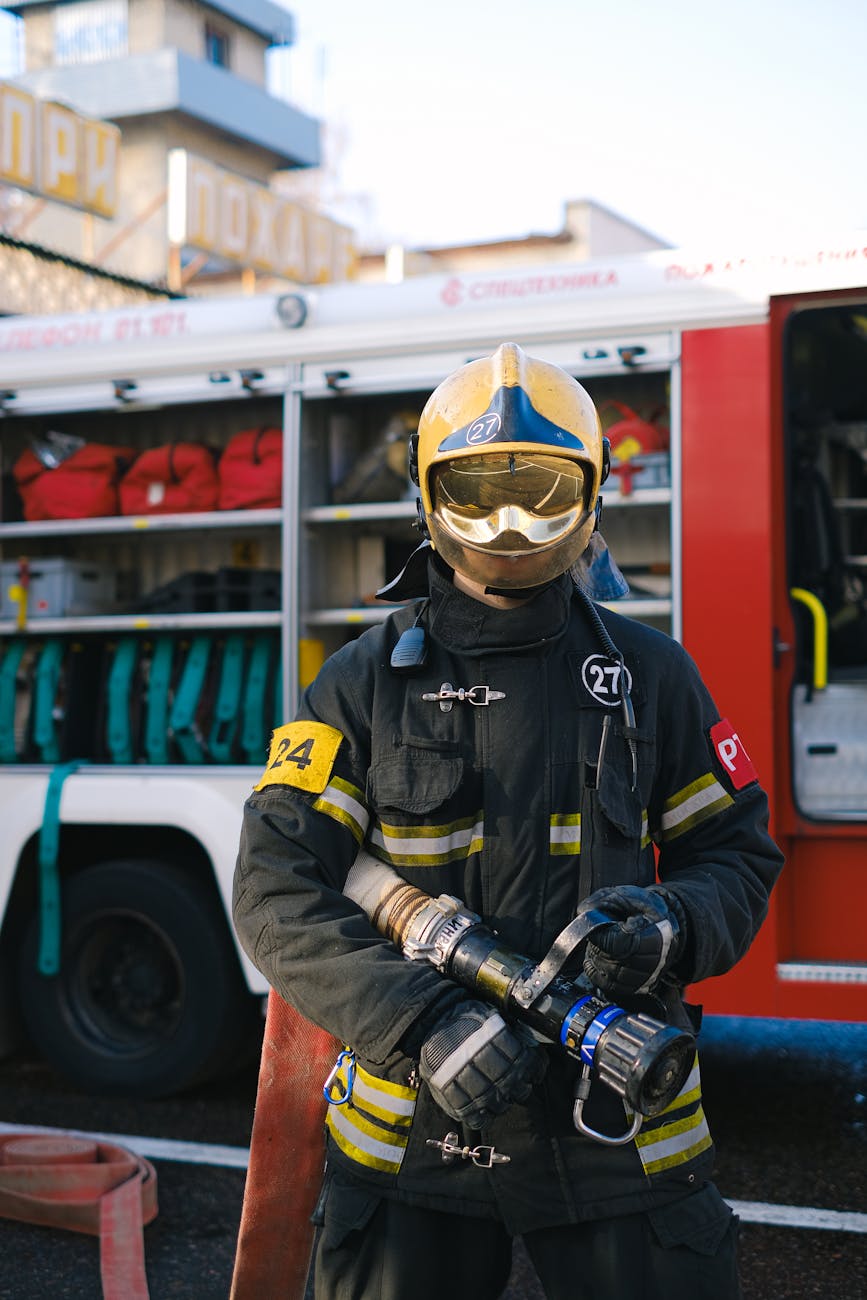
Emergency Preparedness: Fire Safety, Evacuation Plans, and First Aid
Introduction
Emergency preparedness is crucial for ensuring safety in homes, workplaces, and public spaces. Fires, medical emergencies, and other disasters can occur unexpectedly, making it essential to have proper safety measures in place. This guide covers three key aspects of emergency preparedness: fire safety, evacuation plans, and first aid. By understanding and implementing these measures, individuals and organizations can minimize risks, protect lives, and reduce property damage.
1. Fire Safety
Fire safety involves preventive measures and actions to reduce the risk of fires and ensure safe evacuation if a fire occurs.
Key Fire Safety Measures:
- Install Smoke Alarms: Place them on every level of a building and test monthly.
- Fire Extinguishers: Keep them accessible and ensure people know how to use them (PASS technique: Pull, Aim, Squeeze, Sweep).
- Electrical Safety: Avoid overloading circuits and check for damaged wires.
- Safe Storage of Flammable Materials: Keep them away from heat sources.
- Cooking Safety: Never leave cooking unattended, and keep flammable objects away from stoves.
- Emergency Numbers: Post fire department contacts in visible areas.
What to Do in Case of a Fire:
- Alert everyone and activate the fire alarm.
- Evacuate immediately if the fire is uncontrollable.
- Stay low to avoid smoke inhalation.
- Close doors behind you to slow the fire’s spread.
- Call emergency services once in a safe location.
2. Evacuation Plans
An evacuation plan ensures a safe and orderly exit during emergencies like fires, earthquakes, or chemical spills.
Steps to Create an Effective Evacuation Plan:
- Identify Exits: Mark primary and secondary escape routes.
- Assign Roles: Designate evacuation wardens to assist others.
- Assembly Points: Establish a safe meeting area away from danger.
- Accessibility: Ensure routes are accessible for people with disabilities.
- Practice Drills: Conduct regular fire and evacuation drills.
During an Evacuation:
- Stay calm and follow instructions.
- Do not use elevators (if applicable).
- Assist those who need help but prioritize your safety.
- Account for everyone at the assembly point.
3. First Aid Basics
First aid provides immediate care to injured or ill individuals before professional medical help arrives.
Essential First Aid Skills:
- CPR (Cardiopulmonary Resuscitation): Used when someone is unresponsive and not breathing.
- Heimlich Maneuver: For choking victims.
- Treating Burns: Cool with running water, cover with a sterile bandage.
- Controlling Bleeding: Apply pressure with a clean cloth.
- Splinting Fractures: Immobilize injured limbs to prevent further damage.
First Aid Kit Essentials:
- Bandages, gauze, adhesive tape
- Antiseptic wipes
- Scissors, tweezers
- Pain relievers
- Emergency blanket
- Gloves
Conclusion
Emergency preparedness saves lives. By implementing fire safety measures, having a clear evacuation plan, and knowing basic first aid, individuals and organizations can respond effectively to emergencies. Regular training, drills, and awareness ensure readiness when disaster strikes.
Fire Prevention vs Fire Suppression: What’s More Important?
Fire Safety Interview: 50 Questions and Sample Answers
How to Conduct a Fire Drill at Work?
Fire Safety and Emergency Preparedness
Movie Review: Agni (Fire Fighter, Fire Officer and Fireman) – Every Fireman Must watch
FAQs
1. How often should fire drills be conducted?
Fire drills should be conducted at least twice a year in workplaces and schools, and households should practice them periodically.
2. What should I do if someone is severely burned?
Cool the burn with running water (not ice), cover it with a clean cloth, and seek medical help immediately.
3. How can I make my home more fire-resistant?
Use fire-resistant materials for construction, install sprinkler systems, and avoid storing flammable items near heat sources.
4. What’s the first step in an evacuation?
The first step is to stay calm, alert others, and follow the designated evacuation route.
5. Where should first aid kits be stored?
Place them in easily accessible locations, such as kitchens, offices, and vehicles.
By following these guidelines, you can enhance safety and readiness in any emergency situation. Stay prepared, stay safe!
That’s Great